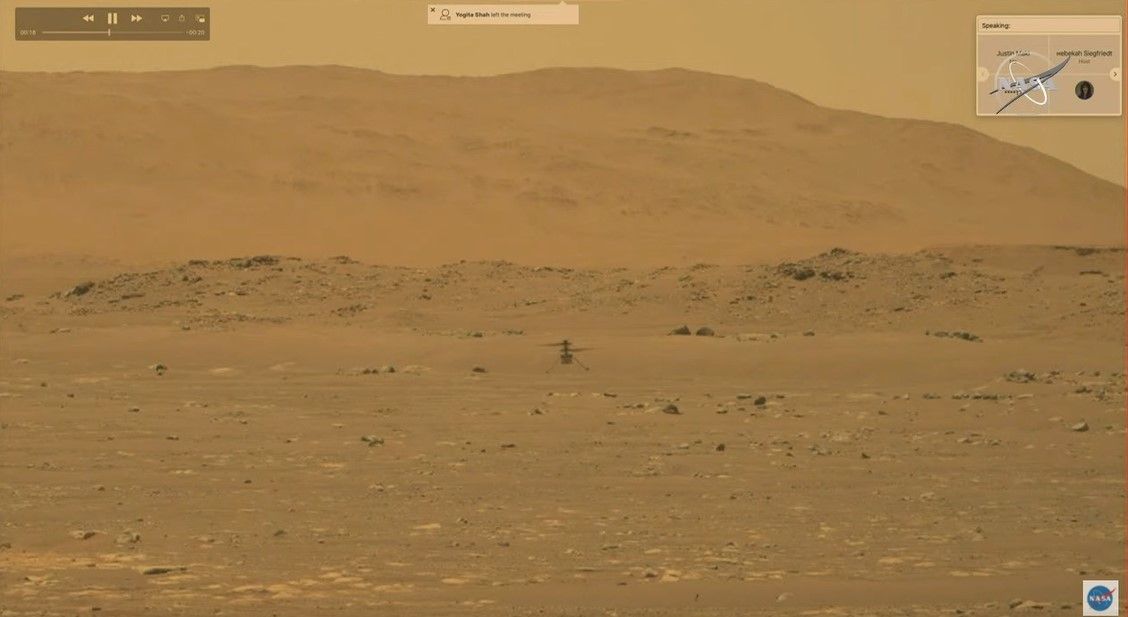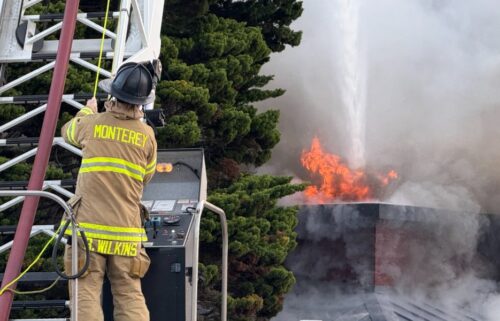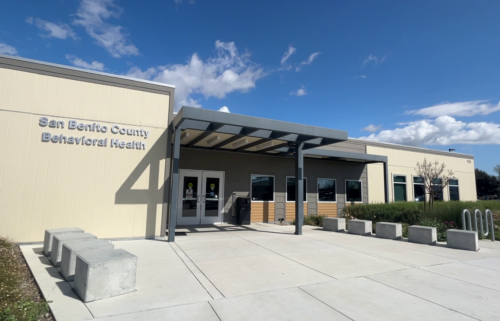After fourth successful flight, Mars helicopter gets a new mission

After four successful flights on Mars, the Ingenuity helicopter is graduating to a new phase of its mission and will fly for at least another month on the red planet.
The little 4-pound chopper has achieved all of its objectives — and now it will chase after new ones. This also means the Perseverance rover and its aerial sidekick get to spend more time together working on a joint mission.
“Ingenuity is going to transition from a technology demonstration, where we prove the technical capabilities of the helicopter, to an operations demonstration where we’re going to gather information on the operational support capability of the helicopter while Perseverance focuses on its science mission,” said Lori Glaze, director of NASA’s Planetary Science Division at NASA Headquarters in Washington, during a press conference Friday.
The helicopter has exceeded expectations, which drove the decision to further its mission and test out capabilities. This will allow Ingenuity to demonstrate flight operations that could benefit the future exploration of Mars.
“Our team has been extremely happy and proud of the Ingenuity flights to date, and now it’s like Ingenuity is graduating from the tech demo phase to the new ops demo phase where we can show how a rotorcraft can be used and ensure products that only an aerial platform from an aerial dimension can give,” said MiMi Aung, Ingenuity project manager at NASA’s Jet Propulsion Laboratory in Pasadena, California, during the press conference.
Fourth flight findings
Ingenuity was supposed to lift off Thursday, but data showed that the helicopter did not transition to flight mode, so the fourth flight was rescheduled for Friday.
The helicopter’s computer includes a watchdog timer that expires and prevents flight if it senses any hindrances. However, there is a known issue regarding a 15% chance that this timer could expire each time the helicopter attempts a flight. The time-out does not prevent future flights, but it did lead to a postponement of Ingenuity’s initial flight and the fourth flight, the team said.
As members of the helicopter team target more flights, they may deploy a fix to the software “so we don’t have to play this dice game every time we try to fly,” said Bob Balaram, Ingenuity chief engineer at JPL.
Another attempt of the fourth flight occurred Friday at 10:49 a.m. ET, or 12:33 p.m. local Mars time.
The first flight data came in to the JPL control room at 1:39 p.m. ET.
Ingenuity ascended to its usual altitude of 16 feet (5 meters) and then flew south for 436 feet (133 meters). It passed over rocks, small impact craters and sand ripples and used its black-and-white navigation camera to capture images of this intriguing landscape every 4 feet (1.2 meters).
The helicopter increased its max airspeed to 8 miles per hour (3.6 meters per second).
Ingenuity traveled for an 872-foot (266-meter) round trip and remained in the air for 117 seconds, which was “another set of records for the helicopter, even compared to the spectacular third flight,” Aung wrote in an update.
The Perseverance rover also captured images and video of Ingenuity’s flight — including sound for the first time.
During the flight, the helicopter’s cameras captured views that provide “an aerial perspective of Mars that humanity has never seen before,” Aung wrote.
The images taken by the chopper and the rover will be shared as the team has a chance to process them in the coming days.
A new phase of exploration
The new operations phase will last for 30 Martian sols, or 31 Earth days, in addition to the initial 30 sols that Ingenuity was designed for as a technology demonstration. If Ingenuity is still capable of flight beyond these 60 sols, the phase may be extended, according to the helicopter team.
During the new phase, Ingenuity will focus on aerial observation of specific scientific targets using its cameras, looking at features not accessible by rovers like Perseverance, as well as scouting for potentially intriguing scientific sites. The helicopter also will seek out a new airfield to travel to and conduct more test flights.
Ingenuity also can conduct imaging that will help improve digital elevation maps of the Jezero Crater site, where both Perseverance and the helicopter are located. These maps could benefit future aerial missions.
The fourth and fifth flights are still considered to be part of the tech demo phase. Ingenuity will conduct its sixth and seventh flights during the new operations phase. The operations phase will begin in about two weeks.
Data from the fourth flight will inform plans for Ingenuity’s future aerial adventures. For the fifth flight, Ingenuity will depart Wright Brothers Field, the home of its first four experimental flights, and make a one-way flight transfer to a new airfield. This flight is expected to occur in about a week.
So far, the helicopter has remained healthy, with only a software glitch postponing a couple of its flights. The only concern moving forward that could impact Ingenuity’s longevity is its durability as it experiences continual cycles of freezing and thawing, Balaram said.
“It wasn’t really designed for a long mission,” Balaram said. “The expectation is that at some point, something will snap.”
During future flights, Ingenuity will soar over previously unsurveyed terrain, which means “there’s a high probability of a bad landing,” Aung said.
She said that each image and video has brought her and the team so much joy that they “almost feel the freedom that Ingenuity feels” as it flies.
“We will be celebrating each day that Ingenuity survives and operates beyond the original window,” Aung said.
The rover and the helicopter
The continuation of Ingenuity’s mission will proceed as long as it remains on a “not to interfere” basis with the science mission of the Perseverance rover.
While Ingenuity conducted its initial flights, the rover remained perched at an overlook to take video and images, preventing it from doing much else.
Now, it’s time to prepare Perseverance to investigate intriguing rocks and sample them so that future missions can return them to Earth in the search for evidence of ancient microbial life beyond our planet.
“The challenge that we foresaw originally with the helicopter, and the science mission, is that we thought we would be doing an intensive drive campaign in which the helicopter would not be able to keep up,” said Ken Farley, Perseverance project scientist at the California Institute of Technology.
But in a fortuitous twist, the rover has discovered a wealth of rocks that the science team wants to study in detail not far from Ingenuity’s original airfield.
Perseverance will spend the next couple hundred sols exploring a 1.24-mile (2-kilometer) patch of Jezero Crater’s floor. Members of the science team believe they will find some of the oldest material in the crater, the site of a 3.9-billion-year-old lake bed.
“These rocks are likely to be mudstones, once mud at the bottom of the lake, and these are very important for our investigation because this is the kind of environment that we expect to be most habitable by organisms that might have existed on Mars billions of years ago, as well as having the capability to preserve bio signatures over the billions of years since,” Farley said.
The rover will collect three or four samples of the area before heading northwest toward the ancient, dry river delta.
Before this collection can begin, Perseverance needs to go through some more checkouts to prepare its sampling system and driving capabilities. The team estimates Perseverance will collect its first sample in July, said Jennifer Trosper, Perseverance rover deputy project manager at JPL.
Ingenuity will be the one leaving Perseverance in search of new airfields.
The two robots can be a kilometer or more apart, or over half a mile, and still be able to communicate with each other. Ingenuity won’t require as much support from the rover during the operations phase, freeing up the rover to embark on its main quest.
“I think Perseverance has enjoyed having a little buddy there on the surface,” Trosper said.
The rover and helicopter teams will use the 30 sols of the operations phase to test out how the two missions can work in sync.
“Now that we’re moving into this additional demonstration phase, we really do have to see whether it is possible to carry out the science mission, and support the helicopter simultaneously,” Farley said.
Ingenuity will wrap up flight operations no later than the end of August, which will allow the rover team to conclude their science activities and prepare for a communications blackout between Mars and Earth in mid-October when the two planets are on opposite sides of the sun.
“We have so appreciated the support provided by the Perseverance rover team during our technology demonstration phase,” Aung said. “Now we have a chance to pay it forward, demonstrating for future robotic and even crewed missions the benefits of having a partner nearby that can provide a different perspective — one from the sky.”



